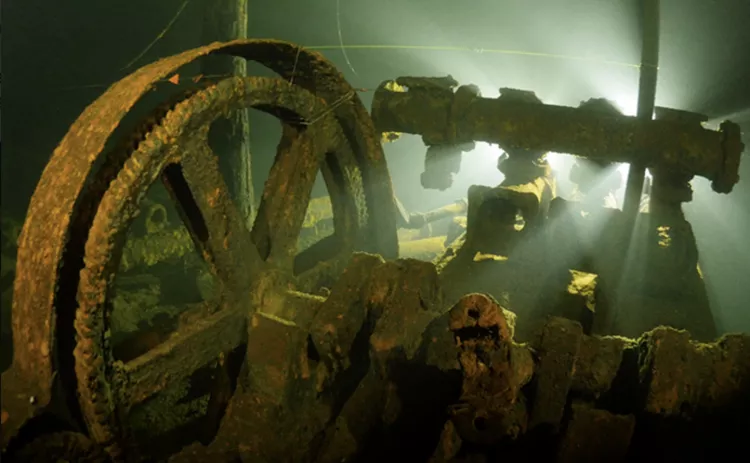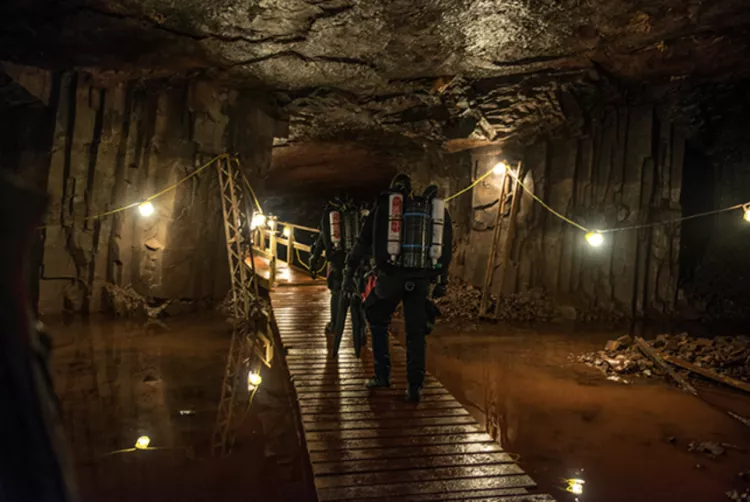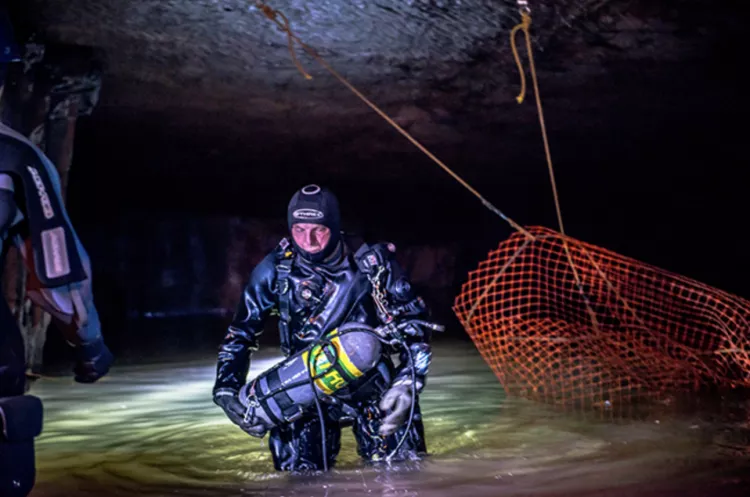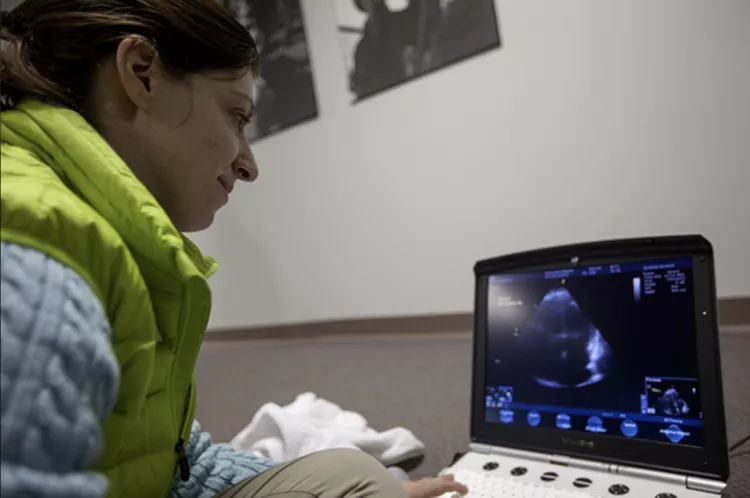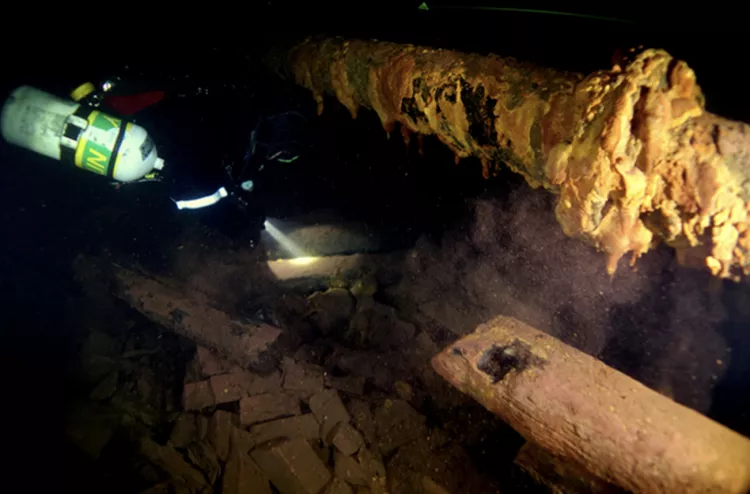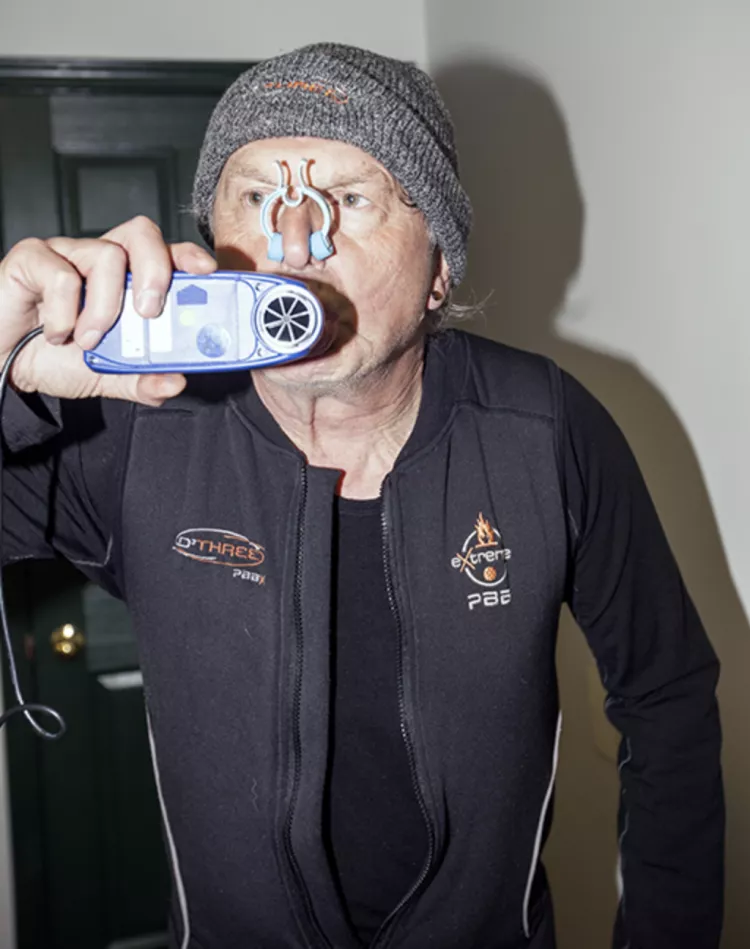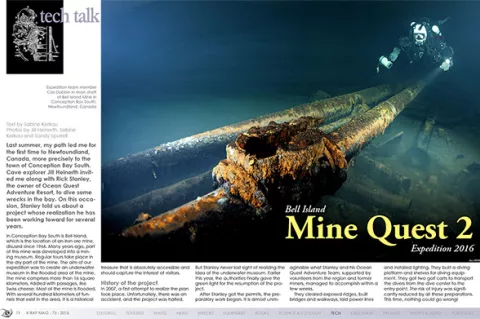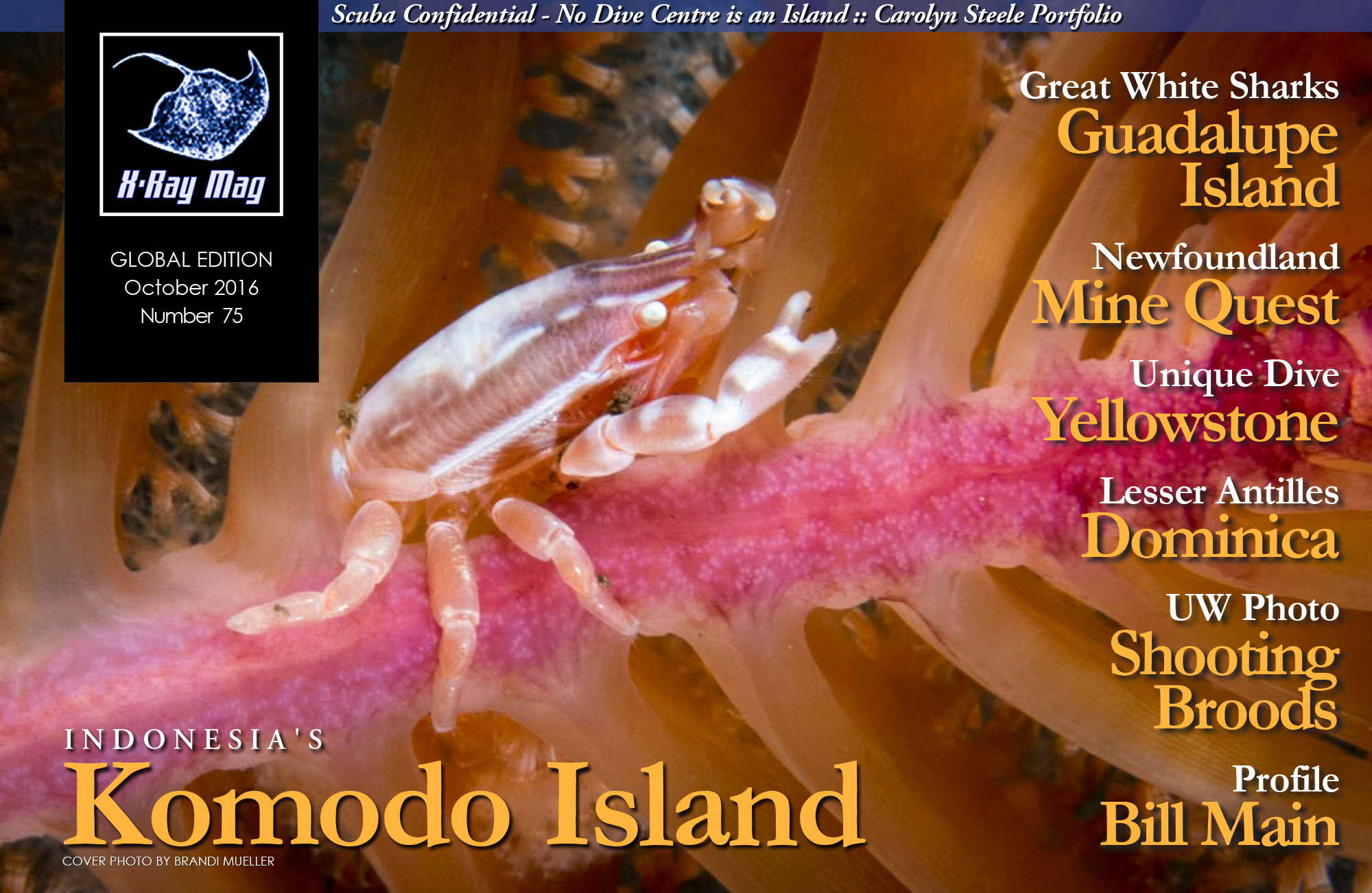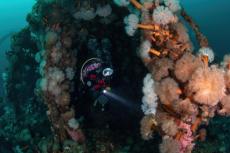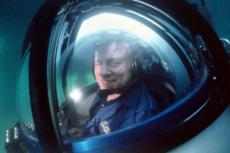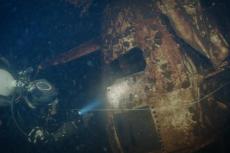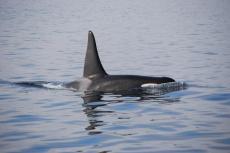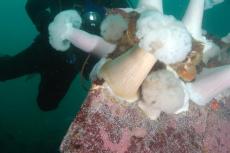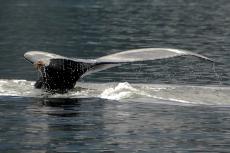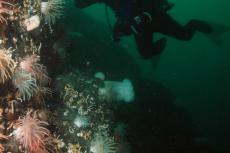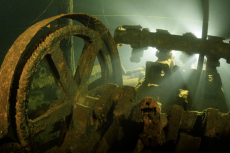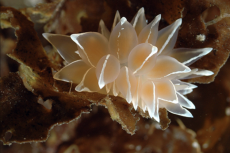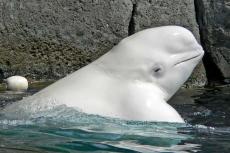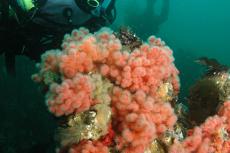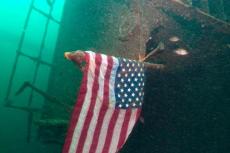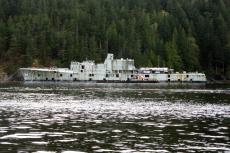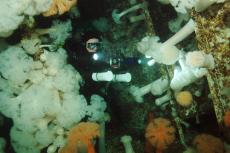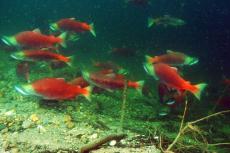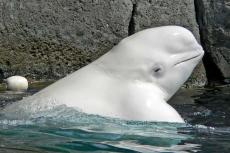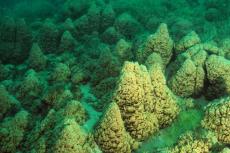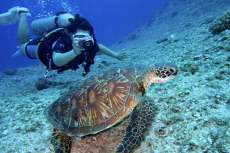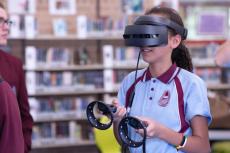Last summer, my path led me for the first time to Newfoundland, Canada, more precisely to the town of Conception Bay South. Cave explorer Jill Heinerth invited me along with Rick Stanley, the owner of Ocean Quest Adventure Resort, to dive some wrecks in the bay. On this occasion, Stanley told us about a project whose realization he has been working toward for several years.
Contributed by
In Conception Bay South is Bell Island, which is the location of an iron ore mine, disused since 1966. Many years ago, part of this mine was developed into a mining museum. Regular tours take place in the dry part of the mine. The aim of our expedition was to create an underwater museum in the flooded area of the mine.
The mine comprises more than 16 square kilometers, riddled with passages, like Swiss cheese. Most of the mine is flooded. Considering the several hundred kilometers of tunnels that exist in the area, it is a historical treasure that is absolutely accessible and should capture the interest of visitors.
History of the project
In 2007, a first attempt to realize the plan took place. Unfortunately, there was an accident, and the project was halted. But Stanley never lost sight of realizing the idea of the underwater museum. Earlier this year, the authorities finally gave the green light for the resumption of the project.
After Stanley got the permits, the preparatory work began. It is almost unimaginable what Stanley and his Ocean Quest Adventure Team, supported by volunteers from the region and former miners, managed to accomplish within a few weeks.
They cleared exposed ridges, built bridges and walkways, laid power lines and installed lighting. They built a diving platform and shelves for diving equipment. They got two golf carts to transport the divers from the dive center to the entry point. The possibility of injury was significantly reduced by all these preparations. This time, nothing would go wrong!
Expedition team
In the actual expedition, cave explorer Steve Lewis was appointed team leader of the dive team. Like Stanley, he was one of the team members in the 2007 expedition. This time, the dive team consisted of Steve Lewis, Jill Heinerth, Phil Short, Gemma Smith, Cas Dobbin, John Olivero and myself.
Divers Alert Network (DAN) supported our project. They were represented by researchers Dr Neal Pollock and Stefanie Martina. The dive team members were monitored throughout the project by the researchers, undergoing various daily tests. These included blood samples, heart scans, lung function checks, as well as analyses of saliva and urine samples. Pollock and Martina gained valuable information about decompression stress at this time. The expedition team was also accompanied by a film crew, directed by Robert Osbourne, who reported on the project for the Daily Planet.
During the expedition, the team was supported by a group of around 20 volunteers led by Stanley and Jack Wood. They ensured our safety, helped us with the equipment and catering, and facilitated our jobs wherever possible.
It was a great honor for me to participate in the second Mine Quest expedition. It was a chance to do something very special, as it was declared the Expedition of the Year by The Explorers Club in New York and the Royal Canadian Geographical Society.
The expedition
The beginning of the first week of the second Mine Quest expedition project had been set for 15 February 2016. All preliminary preparations had been successfully completed and project helpers eagerly awaited the arrival of the expedition team, medical team and film crew, flying in from all over the world on February 13 and 14. But the Canadian winter can be unpredictable. A heavy snowstorm delayed the arrival of the participants, and put the flexibility of the organizers to the test. The last team members finally reached Newfoundland late in the evening of February 14.
During the first team meeting, there were health screenings and the film crew took their first shots, leaving us little time for sleep before the first day of the expedition. But who needs sleep on the eve of such an incredible adventure?
On the morning of February 15, we loaded the pickup trucks with tons of equipment and made our way to Bell Island. There is only one way to get to the island: on a small car ferry, which runs regularly.
Arriving at the mine, we first had to clear the entrances of snow. Thereafter, the equipment was dumped in a dry cavern of the mine where it could be left to remain until the end of the expedition. Directly above this former locker room, there is a small mining museum which is closed during the winter months. During the expedition, it was used by the DAN team and the film crew as a base. Even the diving team used it to warm up in after the dives and received medical attention in the cafeteria.
The first dive
The first dive team included Short and Smith, who were to place the main guideline in the underwater area of the mine. They were followed by Heinerth and Dobbin, who were responsible for photographing the mine and collecting samples. The last team consisted of Lewis, Olivero and me. Olivero and I would look for artifacts and document the mine. Lewis would position markers on the main line during the survey of the mine.
All teams performed their tasks successfully. Unfortunately, the visibility was not good during our dive. Nevertheless, we were all very impressed with our first insights from the dive. We found large tunnels, lots of branches, pipes, pumps, signs and pictures on the walls, lamps and more tools.
After the dive, we were taken on the golf cart back to the locker room. After surfacing, we had 20 minutes to get back to Pollock and Martina. Over the next two hours, a cardiac scan was performed on each diver every 20 minutes. In addition, blood tests were taken and various spirometric (lung) tests performed.
The other two teams had already gone back to the mainland. My team, the DAN team and Stanley could only head back later because of the tests. Meanwhile, the weather had deteriorated and the ferry ceased operating. We had to stay on Bell Island. It is in such situations that the quality of one‘s team is revealed.
Weather worries
A snowstorm descended on us and it was bitterly cold. In winter, almost all business on Bell Island is closed, including accommodations. We could not stay in the car and the museum was closed. We thought in the short term, we could ask for shelter for the night in the local jail or at the hospital. Fortunately, Stanley was able to get the owner of the hotel on Bell Island to find a place and open rooms especially for us.
On the second day, everything ran without problems. Our dive teams were the same as the day before. Everyone knew what he or she had to do. Olivero and I found wonderful artifacts, including a Pepsi-Cola bottle from 1960.
Around noon, we received news that the weather had gotten bad and the ferry would cease operation again. This time, we made the last ferry.
Over the next few days, Stanley rented a hotel on Bell Island for the whole team. We were able to schedule two dives per day without the pressure of making the last ferry out each day. Only the gas supply was a bit tight. Stanley and his wife, Debbie, brought us refilled bottles on their boat, because bad weather conditions would not allow transport by ferry. We made good progress. Everyone was very pleased with the results. The dives were great. Stanley was quite right about the project.
Flooding
I suspect that if there had not been any problems or challenges, then it might have been almost boring to dive the mine. Then, there was a sudden thaw in the weather conditions, and it began to rain heavily, causing the snow to melt overnight.
When we arrived at the mine the next morning, a wet surprise awaited us. The water level had risen by almost one and a half meters. Part of our equipment was on the verge of being flooded. The new entry was no longer usable.
So, the entire expedition team had to improvise yet again. The support team immediately set to work recovering our equipment. Within two hours, a new dry area was cleared and all the equipment, including storage facilities, were transported there. And so, the expedition continued, without much delay.
With all the water that had flowed into the mine, the diving conditions had deteriorated massively. Visibility at 20m depth was very bad and the temperature in the shallows was only 2 to 3°C. Despite all these challenges, we had a very successful expedition, with continual safety.
In all, we laid 400m of yellow line, documenting many artifacts along the way. Even the film crew and the DAN team were very pleased with their yield. For me, it was a fantastic experience to work with such a professional team. ■
For more information, please visit: Bellislandmines.com. Sabine Kerkau is a German technical diver, dive writer and underwater photographer based in Switzerland. For more information, please visit: Sabine-Kerkau.com.

